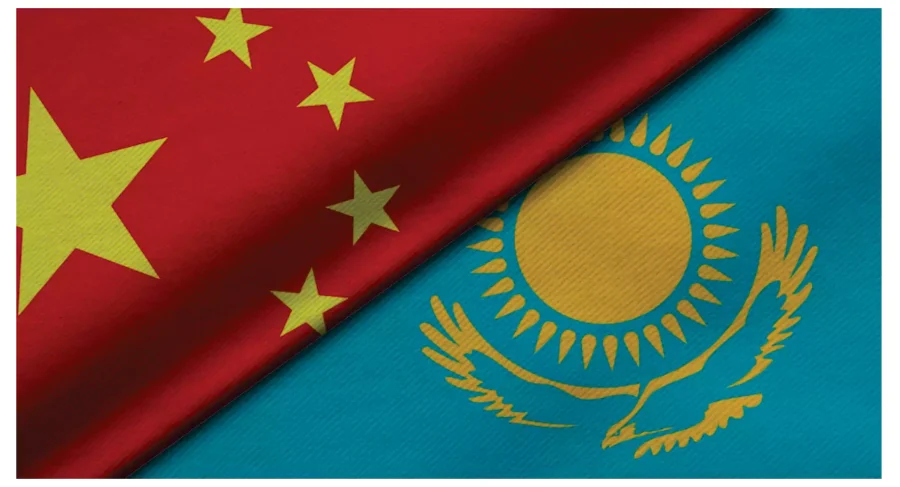The Republic of Kazakhstan is the origin country of the One Belt One Road Initiative (BRI) thus it has strategic relevance to it. It was launched during Chinese President Xi Jinping’s September 2013 visit to Astana, highlighting Kazakhstan’s critical transit role in China’s pivot to the world and especially Europe.
Undoubtedly, BRI projects are spreading economic feel good gestures and sentiments in the Central Asia Region and look highly promising, in terms of increased connectivity, expanded regional trade and modernize their obsolete transport infrastructure. Thus BRI has been increasing their potential of trade and commerce, integration of socio-economic development and last but not the least eradication of poverty.
Kazakhstan is the largest landlocked country and the 9th largest in the world. It shares a border to the east with China, and borders Russia to the north, Kyrgyzstan and Uzbekistan to the south, and Iran. Its ideal geographical location facilitates connectivity between China and the West via key routes under the BRI flagship.
Today two of the six economic corridors of BRI pass through Kazakhstan connecting China with Europe, Iran and Western Asia. Mainly the New Eurasian Land Bridge and the China-Central Asia-West Asia Corridor pass through it.
It is good omen that the BRI comprises 51 mega projects of US$35 billion in Kazakhstan, in which US$3.5 billion is invested in the International Centre for Border Cooperation Khorgos and a dry port on the eastern border with China. Its investments include the Shalkar-Beyneu Railways, the Zhezkazgan-Suksanl Railways, the Kuryl Seaport, the Unified System of Management “NOMAD” and Almaty-Sha Railway Line, Almaty bypass railways etc. Thus Kazakhstan is the “jewel” of BRI in Central Asia and beyond.
Moreover, Kuryk Seaport has direct access to railway tracks which has already enhanced its “strategic” value. The port is well located at the intersection of the East-West and North-South trade corridors (Iran, India and Russia) creating one of the fastest multinational routes for cargo delivery. It is meant to perform multi tasks mainly to increase Kazakhstan’s trade activities with Caspian Sea Region (CSR) and transit potential of the Caspian Sea.
The 24th Meeting of the Council of Heads of State of the Shanghai Cooperation Organisation (SCO) held in Astana on July 3-4. Chinese President Xi Jinping attended the summit which marked his fifth trip to Kazakhstan, following previous visits in 2013, 2015, 2017 and 2022.
For over 30 years since Kazakhstan’s independence, China and Kazakhstan have transitioned from bilateral cooperation to broader multilateral engagements within the frameworks of the SCO and the Belt and Road Initiative (BRI). Their mutual support and shared achievements have charted an extraordinary path of cooperation, setting a benchmark for pragmatic collaboration under the BRI.
With the passage of time China and Kazakhstan have developed their pragmatic cooperation and further enhanced their status of comprehensive strategic partners. Their bilateral trade volume was around US$370 million in 1992. By 2023, this figure had surged to over US$41 billion, a more than 100-fold increase, accounting for 28.3 percent of Kazakhstan’s total trade volume. This achievement surpasses the $40 billion trade target for 2030 set by the leaders of both nations.
Moreover, between 2005 and 2023, China invested $25.3 billion in Kazakhstan, solidifying Kazakhstan’s position as China’s largest trading partner in Central Asia and one of its most important economic partners, bringing tangible benefits to both countries.
Critical analysis reveals that within the SCO framework, China and Kazakhstan have aligned their positions on international and regional issues, providing each other with steadfast mutual support.
It is pertinent to mention that jointly they have played a constructive role in the development and expansion of the SCO, fostering cooperation in areas such as institutional building, counter-terrorism, combating crime, regional security, economy, trade, agriculture, energy, science and technology, finance, culture, information, education, transportation, tourism, and environmental protection.
It augurs well that both sides are committed to maintaining regional peace, security and stability, and promoting a new, democratic, just, and rational international political and economic order, thereby contributing to a more representative, democratic, just, and multipolar world order.
Kazakhstan has been an active participant in the BRI since its inception, creatively proposing the integration of the Silk Road Economic Belt with its “Bright Road” economic policy which
offers a new path for collaborative development between China and BRI-participating countries and regions. The China-Kazakhstan production capacity cooperation has pioneered a new model of pragmatic collaboration under the BRI, providing a template for industrial upgrading and enhancing local employment and poverty alleviation.
It seems that the China-Kazakhstan (Lianyungang) logistics cooperation base has opened a maritime route to the Pacific for Kazakhstan, transforming it from a landlocked to a land-linked country, and expanding the geographical scope of international cooperation for Kazakhstan and other Central Asian nations, significantly altering the geopolitical and economic landscape of Eurasia. Interestingly, China and Kazakhstan are building a digital Silk Road, a green Silk Road, and a Silk Road of health, setting an example for building a global community of shared future.
In summary, China and Kazakhstan are embarking on a new golden 30 years of bilateral cooperation, advancing into the next vibrant 20 years of the SCO from its youth to maturity, and opening another decade filled with opportunities and hope under the BRI. Hopefully, the future promises even deeper mutual trust and assistance, enhanced bilateral pragmatic cooperation and a more influential SCO.
China and Kazakhstan will further contribute positivity and productivity in the regional as well as international affairs and play their constructive role in greater regional connectivity, security, development, digitalization, e-commerce, socio-economic integration, infrastructure development, poverty eradication, generation of new jobs, climate change, green transformation, rail and transport connectivity, smart living, agricultural cooperation and last but not least, human capital in the days to come.
There is great potential for mutual cooperation in renewables, solar, wind, lithium battery, EVs, metals & mining, SMEs, services, and qualitative industrialization which must be jointly tapped and pursued.










